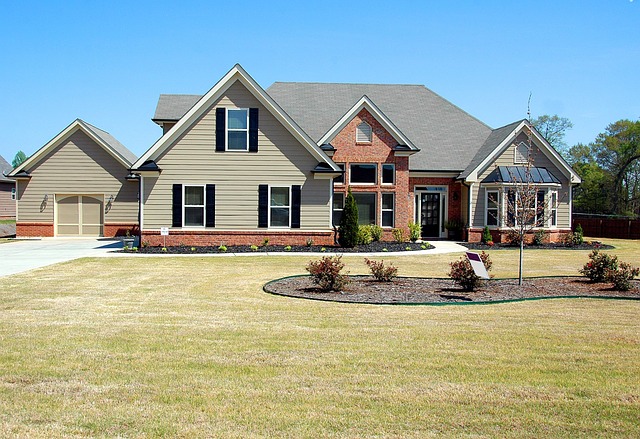Home Valuation Explained: How Property Values Are Determined
Discover how home value is calculated and what really drives property prices. This guide covers the most important factors that affect value—age, renovations, location, lot size, transit access, and unique features—plus professional appraisal methods, DIY estimates, and practical ways to boost your home’s market worth. Learn when values change and which upgrades deliver the best returns so you can make smarter real estate decisions.

Understanding what determines a home’s market value helps buyers, sellers, and owners make better financial choices. Home value is shaped by many elements—from the age and condition of the property to neighborhood desirability and broader economic trends. This article breaks down the key influences, explains how professionals establish value, outlines do-it-yourself estimation methods, and suggests ways to raise your property’s worth.
Key factors that influence a home’s value
Age and condition: Older houses may carry charm but can also come with maintenance needs that reduce value. Well-maintained older homes or recently updated properties often command higher prices than similar homes in poor repair.
Recent renovations and upgrades: Kitchens and bathrooms, modern systems, and structural improvements typically increase appeal and resale value. Records of professional work and permits also reassure buyers and appraisers.
Local market conditions: Supply and demand in your specific area, recent comparable sales, and how many similar homes are for sale all affect pricing. Hot markets push values up; oversupplied markets push them down.
Neighborhood safety and desirability: Low crime rates, good schools, clean streets, and nearby amenities tend to boost property values. Perception matters—well-kept public spaces and community investment can raise demand.
Access and location: Proximity to public transportation, highways, major employers, and services influences desirability. Easy commutes and access to transit often add value, though very busy roads can have the opposite effect.
Lot size and landscaping: Larger lots, usable outdoor space, mature trees, and attractive landscaping increase the livability and perceived value of a property. Poor drainage, steep slopes, or unusable yard areas can reduce value.
Unique features and architecture: Distinctive architecture, high-quality finishes, or historic character can add value if they match buyer tastes. Conversely, highly unusual layouts or low-demand features may limit potential buyers.
How professionals determine a property’s worth
Certified appraisers and agents use several established approaches to arrive at a credible valuation. The most common are:
Comparative Market Analysis (CMA): This relies on recent sales of comparable homes nearby. Adjustments are made for differences in size, condition, and features to estimate a fair market price.
Cost approach: This method estimates what it would cost to rebuild the property today, subtracting depreciation and adding the land value. It is especially useful for newer or unique properties without many comps.
Income approach: Often used for rental or investment properties, this approach values the property based on potential income, using metrics like capitalization rate and net operating income.
Automated Valuation Models (AVMs): Computerized tools use public records, multiple listing data, and statistical algorithms to produce quick estimates. AVMs are convenient but may miss recent renovations or local quirks that affect value.
Most professional valuations combine these methods, along with an on-site inspection and local market knowledge, to produce the most accurate result.
DIY ways to estimate your home’s value
Online valuation tools: Sites such as Zillow, Redfin, and Realtor.com provide instant estimates based on public data. Use them as a starting point, not a definitive answer.
Research comparable sales: Find recent sales of properties similar in size, age, and condition within your neighborhood and use them as benchmarks.
Price per square foot: Calculate the average sale price per square foot from comparable homes, then multiply by your home’s square footage to get a rough estimate.
Track improvements: Keep receipts and descriptions of upgrades and renovations, since documented improvements can justify higher valuations.
DIY estimates can give you a ballpark number, but for mortgage, tax, or legal purposes, a professional appraisal is usually required.
How and how often home values change
Values can fluctuate for many reasons. Short-term factors include seasonal market activity and recent comparable sales. Broader drivers are interest rates, employment levels, and local development projects. Changes in neighborhood safety or amenities can also boost or reduce demand. As a rule of thumb, reassess your home’s value annually or before major financial decisions like refinancing or selling.
Practical steps to increase your home’s value
Focus on high-impact areas: Kitchen and bathroom upgrades often offer strong returns. Update fixtures, countertops, and finishes in line with local buyer expectations.
Energy efficiency: New windows, efficient heating and cooling, better insulation, or solar panels can attract buyers and reduce operating costs.
Curb appeal and maintenance: A tidy exterior, fresh paint, and manicured landscaping create a strong first impression. Regular upkeep prevents small issues from becoming expensive problems.
Add usable living space: Finishing a basement, attic, or adding a functional room typically increases usable square footage and value.
Smart home features: Thermostats, security systems, and convenience-driven technology can be appealing to modern buyers, though ROI varies by market.
Research return on investment: Not all upgrades yield the same financial return. Prioritize improvements that are desirable in your local market to maximize resale value.
| Valuation Method | Best for | Notes |
|---|---|---|
| Comparative Market Analysis (CMA) | Typical residential homes | Reflects recent local sales and market trends |
| Cost Approach | New or unique properties | Useful when comparables are scarce |
| Income Approach | Rental and investment properties | Values income-generating potential |
| Automated Valuation Models (AVMs) | Quick estimates | Fast but may miss recent upgrades |
Cost disclaimer: Estimates and example fees are for illustrative purposes only; actual appraisal or valuation costs vary by market and provider.
Final thoughts
Understanding home value is about combining objective data with local context. Knowing the main drivers of price, the methods professionals use, and how to produce a reliable DIY estimate will make you better prepared for buying, selling, or improving a property. Regularly monitor market trends, document upgrades, and consult a qualified appraiser when making major financial decisions related to your home.






